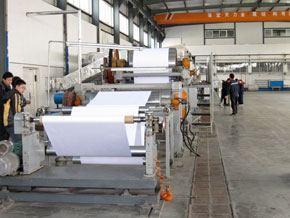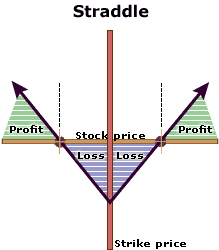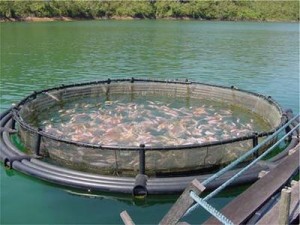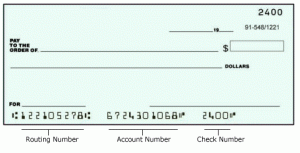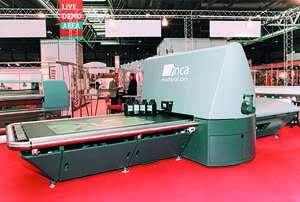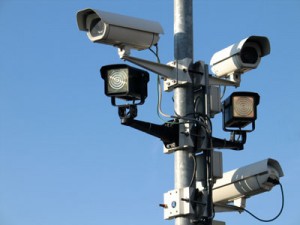Fuel Systems Inc.: Natural gas burns too
 A couple months ago I saw a car driving along the freeway with a windmill in its roof, merrily milling the wind along as the car was zipping towards San Francisco. Of course, the car was some manner of hybrid. Although I commend the car owner for its efforts, I do not commend him for his knowledge of thermodynamics; even if the engine and the windmill both operated at the impossible level of 100% efficiency, the windmill is only recovering the energy spent to overcome the wind resistance created by the windmill itself, and when you factor in the fact that windmills weigh more than 0 pounds, it’s kind a loser all round. Of course, if the windmill could be put up and taken down so it could be used only when the car is not moving, or, better still, had an automatic elevator that would retract it into the roof of the car unless the driver was braking, in accordance with the theory of hybrids, then having a windmill in your car would make sense. I guess every good idea starts out as a bad idea that needs work.
A couple months ago I saw a car driving along the freeway with a windmill in its roof, merrily milling the wind along as the car was zipping towards San Francisco. Of course, the car was some manner of hybrid. Although I commend the car owner for its efforts, I do not commend him for his knowledge of thermodynamics; even if the engine and the windmill both operated at the impossible level of 100% efficiency, the windmill is only recovering the energy spent to overcome the wind resistance created by the windmill itself, and when you factor in the fact that windmills weigh more than 0 pounds, it’s kind a loser all round. Of course, if the windmill could be put up and taken down so it could be used only when the car is not moving, or, better still, had an automatic elevator that would retract it into the roof of the car unless the driver was braking, in accordance with the theory of hybrids, then having a windmill in your car would make sense. I guess every good idea starts out as a bad idea that needs work.
Speaking of which, there is a bill afoot to make hybrid cars make noise, as a car running on electric motors generally makes very little. The reason for this regulation is that pedestrians who are accustomed to “stop, look, and listen” can still be run down by a silent hybrid around a blind corner. Now, the lawyer in me remembers the legal adage “For every wrong there is a remedy,” or to be more precise, “for every wrong there is a lawyer.” It follows that if pedestrians are getting injured despite complying with every rule of common sense, then the real problem is the negligence of the hybrid drivers who are going too fast to stop for a pedestrian who can see but not hear them. Imposing higher insurance requirements and/or instituting a public awareness campaign seems to me a better idea than fitting a perfectly good car with an annoying noisemaker.
So, what’s put me in a car mood lately? Fuel Systems Inc. (FSYS). Their primary line of business is devices to adjust the pressure and concentration of fuel for vehicles that run on natural gas or propane. Given the current interest in building such vehicles, spearheaded by T. Boone Pickens, takeover artist and natural gas magnate, they are in an excellent position and are considering beginning operations in the US. Many of their operations have recently been performed in Italy, where a government subsidy that has recently expired has given them considerable sales growth. Now, for alternative energy, chasing government subsidies around the world is par for the course, but natural gas vehicles do have the advantage of viability.
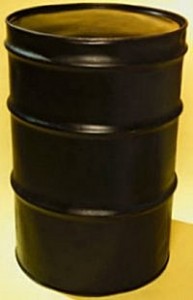 In terms of energy content, 5000 cubic feet of natural gas is considered equal to one barrel of oil, but because of storage and transport issues and the fact that more “stuff” can be refined out of oil, one barrel of oil has traditionally traded at about 6000 cubic feet of gas. However, a few years ago this relationship was severed by the discovery of shale cracking technology, which increases the number of places that natural gas may be extracted from. Natural gas reserves instantly became much larger, and prices fell dramatically. Of course, some say that this is an arbitrage that should eventually be corrected and either the price of natural gas will go up and oil will come down to reflect “energy content parity,” if I may coin the term, and actually the widespread introduction of natural gas vehicles might be just the catalyst to do it. Natural gas is also kinder to the environment, since pure methane contains no C-C bonds and therefore contributes less carbon dioxide per unit of energy extracted than oil does. Did I mention that Linn Energy and Breitburn produce both oil and natural gas?
In terms of energy content, 5000 cubic feet of natural gas is considered equal to one barrel of oil, but because of storage and transport issues and the fact that more “stuff” can be refined out of oil, one barrel of oil has traditionally traded at about 6000 cubic feet of gas. However, a few years ago this relationship was severed by the discovery of shale cracking technology, which increases the number of places that natural gas may be extracted from. Natural gas reserves instantly became much larger, and prices fell dramatically. Of course, some say that this is an arbitrage that should eventually be corrected and either the price of natural gas will go up and oil will come down to reflect “energy content parity,” if I may coin the term, and actually the widespread introduction of natural gas vehicles might be just the catalyst to do it. Natural gas is also kinder to the environment, since pure methane contains no C-C bonds and therefore contributes less carbon dioxide per unit of energy extracted than oil does. Did I mention that Linn Energy and Breitburn produce both oil and natural gas?
Returning to the company, its numbers are fairly respectable; a P/E ratio of 10, hardly any long-term debt, and a balance sheet that is heavily weighted towards current assets. Unfortunately, the price/book ratio is somewhat high, but return on assets has been 12% recently, and return on equity around 20%, well above average for a firm that is technically a growth company. Of course, a now-expired subsidy has much to do with creating those excellent figures, but a company announcement at the end of 2009 suggested that in a post-subsidy world, the firm could look forward to $400-450 million in sales and a margin of 12-14%, which at current prices would preserve a P/E ratio of 10. As this is a firm that is investing in research and development and capital expansion, as well as some strategic acquisitions, depreciation has been running behind capital expenditures and thus free cash flow is lower than earnings.
Of course, government subsidies, either getting them or not getting them, will have a significant impact on the future course of the company, and as a result perhaps a pure value investor may view this as far too reliant on an unpredictable future, but if the company’s projections are close to accurate the firm would still produce a respectable but not outsize return on investment without them. And I do think that natural gas vehicles will be increasing in popularity; they are a viable technology and based on a relatively cheap and abundant resource.


